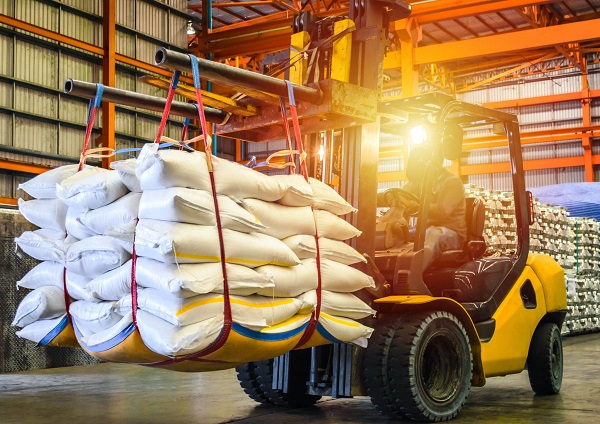Material handling is a critical component of industrial operations, encompassing the movement, protection, storage, and control of materials throughout the manufacturing process.
The efficiency of these processes directly impacts productivity, safety, and overall operational costs. This article will explore best practices in material handling for industrial settings, focusing on optimizing workflows, enhancing safety, and improving efficiency.
1. Understanding Material Handling Fundamentals
Before implementing best practices, it is essential to understand the fundamentals of material handling. Material handling can be divided into several key categories:
- Movement: Involves transporting materials from one location to another within a facility.
- Storage: Refers to the warehousing of materials, ensuring they are accessible when needed.
- Control: Includes tracking inventory levels, locations, and handling methods.
Recognizing the various components of material handling enables businesses to tailor their strategies to meet specific operational needs.
2. Conducting a Material Handling Assessment
To improve material handling processes, companies should conduct a comprehensive assessment. This involves:
- Identifying Material Flow: Map out the entire workflow, from receiving materials to shipping finished products. Identify bottlenecks, delays, and unnecessary handling steps.
- Analyzing Current Equipment: Evaluate the efficiency of existing handling equipment, such as forklifts, conveyors, and pallet jacks. Assess whether they meet the demands of the operation.
- Reviewing Layout and Space Utilization: Examine the facility layout to determine if it supports efficient material flow. Properly organized spaces can significantly reduce handling times.
3. Implementing Ergonomic Practices
Ergonomics plays a crucial role in material handling by minimizing physical strain on workers. Implementing ergonomic practices includes:
- Proper Lifting Techniques: Train employees on safe lifting techniques, such as bending at the knees and keeping loads close to the body.
- Using Material Handling Equipment: Provide appropriate equipment, such as lift tables or hoists, to assist in moving heavy items. This reduces the risk of injuries related to manual handling.
- Designing Workstations: Create workstations that promote natural movements and reduce the need for excessive reaching or bending.
4. Utilizing Automation and Technology
Advancements in technology have transformed material handling practices. Utilizing automation can enhance efficiency and reduce labor costs. Consider the following:
- Automated Guided Vehicles (AGVs): Implement AGVs to transport materials within the facility. These vehicles can operate independently, reducing the need for human operators and improving safety.
- Warehouse Management Systems (WMS): Invest in WMS software to streamline inventory management. These systems can optimize storage locations, track inventory levels, and provide real-time data on material flows.
- Barcode and RFID Technology: Use barcode scanning or RFID technology to track materials throughout the supply chain. This enhances accuracy and reduces the time spent on inventory management.
5. Establishing Standard Operating Procedures (SOPs)
Developing and implementing SOPs is vital for consistency and safety in material handling. SOPs should include:
- Detailed Handling Procedures: Create clear, step-by-step instructions for handling various materials, including proper storage methods and equipment usage.
- Safety Protocols: Outline safety measures to prevent accidents and injuries. Include guidelines for using personal protective equipment (PPE) and emergency procedures.
- Training Programs: Conduct regular training sessions for employees to ensure they understand and adhere to SOPs. This fosters a culture of safety and efficiency.
6. Prioritizing Safety Measures
Safety should always be a top priority in material handling. Consider these measures to enhance safety:
- Regular Equipment Maintenance: Ensure all material handling equipment is regularly inspected and maintained. This reduces the likelihood of equipment failures and accidents.
- Clear Signage and Markings: Use clear signage to indicate safe paths for pedestrian traffic and designated areas for material handling. This helps prevent collisions and injuries.
- Incident Reporting and Analysis: Encourage employees to report near-misses and accidents. Analyze these incidents to identify trends and implement corrective measures.
7. Optimizing Storage Solutions
Effective storage solutions can improve material handling efficiency. Implement strategies such as:
- Utilizing Vertical Space: Maximize vertical space by using tall shelving units or racking systems. This optimizes storage capacity without requiring additional floor space.
- Implementing FIFO and LIFO Systems: Establish first-in, first-out (FIFO) or last-in, first-out (LIFO) systems to manage inventory effectively. This ensures materials are used in the correct order and reduces waste.
- Organizing Inventory: Group similar items together and clearly label storage areas. This simplifies locating materials and minimizes handling time.
8. Regularly Reviewing and Improving Practices
Material handling is an ongoing process that requires continuous evaluation. Regularly review practices to identify areas for improvement. Implement feedback mechanisms where employees can share insights and suggestions for enhancing material handling processes.
Conclusion
Implementing best practices in material handling is crucial for industrial settings aiming to enhance efficiency, reduce costs, and improve safety.
By understanding the fundamentals, assessing current practices, utilizing technology, and prioritizing safety, companies can optimize their material handling processes. Continuous evaluation and adaptation will ensure that these practices remain effective in a dynamic industrial environment.
By following these best practices, businesses can streamline their operations, foster a safer workplace, and ultimately drive success in their material handling processes.
Also Read
Sustainable viation in Africa: Reducing carbon footprints and enhancing efficiency
Tire pressure matters: The hidden key to optimal vehicle performance


